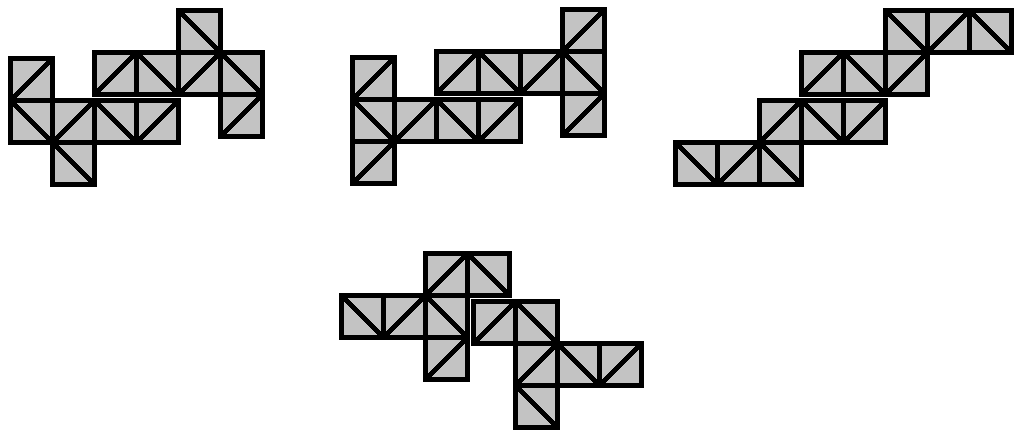Here are two identical cubes:
Your challenge:
- Start with two cubes of exactly the same size.
- Cut the surface of each of these two cubes along its edges and unfold the surface into a 2D shape. (So you now have two 2D shapes.)
- Now show how to re-fold these two 2D shapes to form the surface of a single larger cube, with twice the surface area of one of the originals.
Rules and clarifications:
- The original cubes must be the same size.
- The original cubes may only be cut along their edges.
- Each of the two original cubes must be unfolded into a single continuous shape.
- The two shapes must cover the entire surface of the final cube, with no gaps and no overlaps.
- The edges of the 2D shapes do not need to line up with the edges of the final cube.
- I am aware of exactly one solution (not counting its mirror image), but I can't absolutely guarantee it's the only one. Any solution that meets the above requirements is valid. (And if you can find one that's different from mine, I will be very impressed!)


